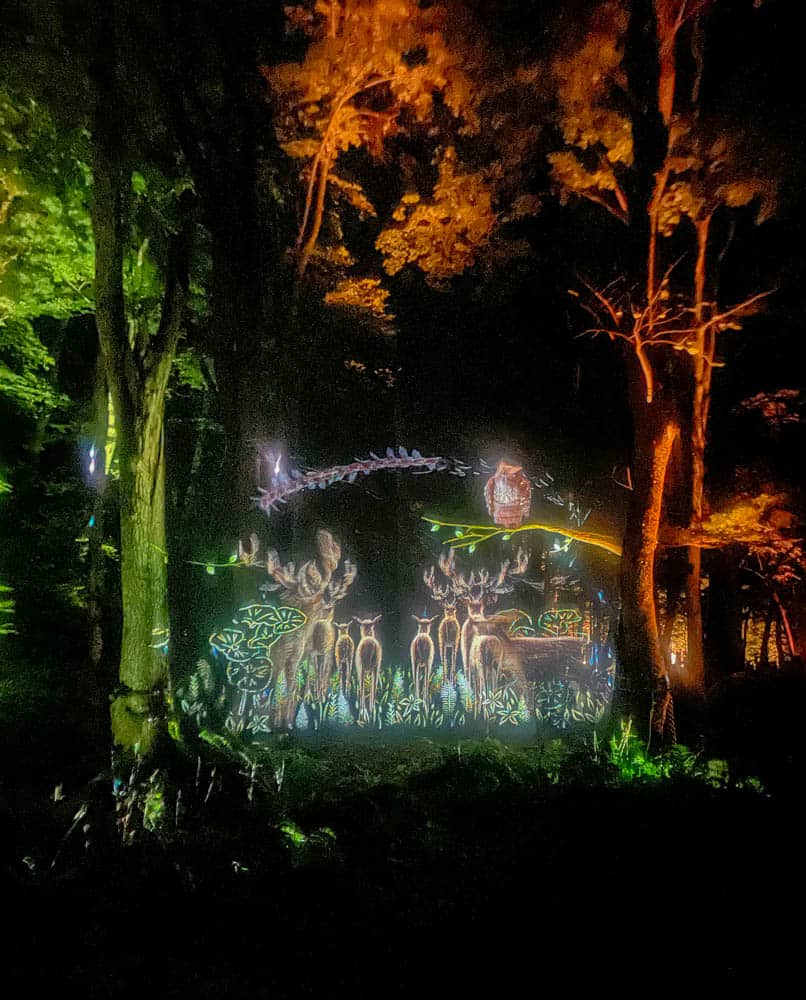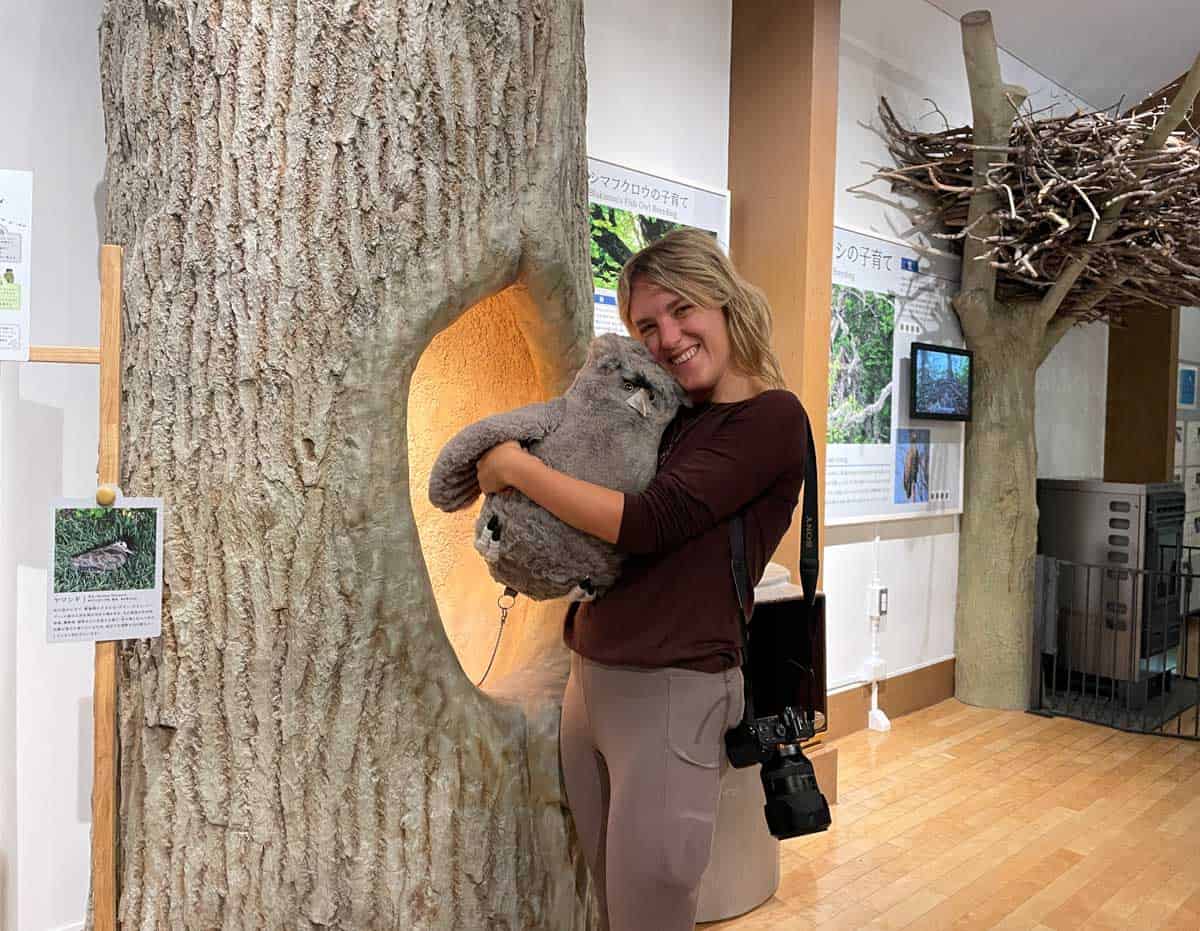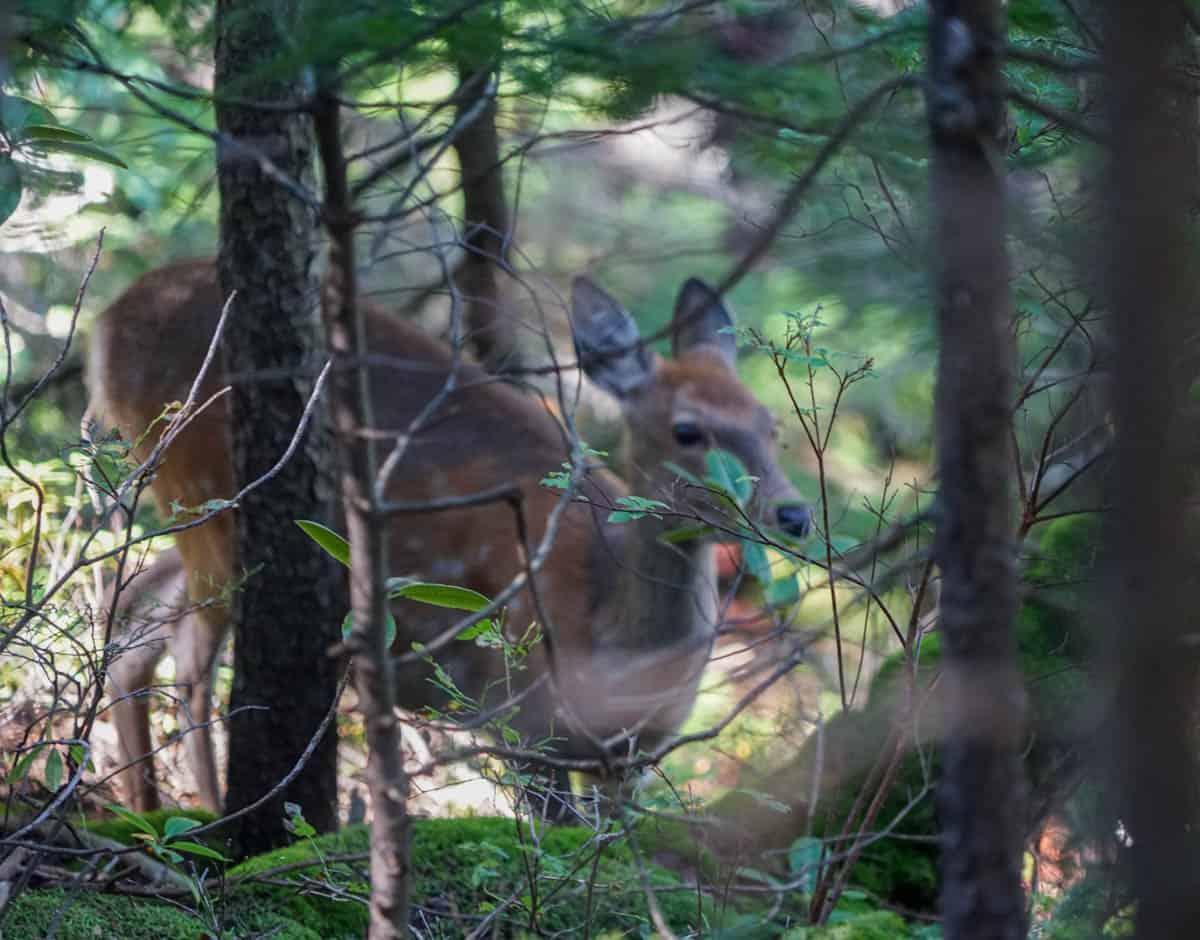This post may contain affiliate links. By clicking and making a purchase through the links, I earn a small commission at no extra cost to you. See my disclaimer for more information. This and display ads allow me to keep the site up to date and give back.
Planning an Eastern Hokkaido itinerary? Let me help! I had the pleasure of visiting Eastern Hokkaido as a media delegate for the Adventure World Travel Summit. The Hokkaido Tourism Organization curated an exceptional itinerary that I’m sharing with you!
Without a clear itinerary, the vastness of Eastern Hokkaido’s natural beauty—from its volcanic landscapes and lush national parks to its unique wildlife—can leave you feeling overwhelmed about where to start, what highlights not to miss, and how to get around.
Tailored to adventurers and those looking to go beyond the regular tourist trail, this Eastern Hokkaido itinerary is designed to ensure you experience the best of this region’s natural wonders, cultural richness, and rich culinary experiences.
From the beauty of Kushiro’s wetlands to the majestic wilderness of Akan-Mashu National Park, this itinerary will take you to the best places in East Hokkaido.

Day 1
Our adventure in Eastern Hokkaido kicked off with a departure from Sapporo to Lake Akan following the conclusion of the Adventure World Summit conference.
The drive to Lake Akan was a scenic, five-hour drive on a charter bus. For those not opting for charter service or driving themselves, reaching Lake Akan involves a couple of travel options.
By Air and Land: Flying to Kushiro from Sapporo or Tokyo is a quick and efficient way to get closer to Lake Akan. Once in Kushiro, Lake Akan is approximately an hour away by road.
By Rail: The train offers a direct route from Sapporo to Kushiro, taking just over four hours.
By Bus: From Kushiro, buses run directly to Lake Akan, providing a straightforward link between the city and the national park. Alternatively, the JR Senmo Main Line can take you from Kushiro to Kawayu Onsen, from where you can catch a bus to Lake Akan.
Private transportation is undoubtedly the best way to explore the vastness of Akan-Mashu National Park, given the limited public transport options within the park itself. Renting a car allows you to discover the park’s hidden gems and scenic spots at your own pace.

Lake Akan, nestled in East Hokkaido, is a beautiful town that makes an excellent base for exploring its surrounding nature.
This caldera lake, renowned for its crystal-clear waters, is part of the Akan-Mashu National Park and presents a unique blend of natural beauty, cultural richness, and geothermal wonders.
Lake Akan Eco-Museum Center

Upon arriving at Lake Akan, we visited the Lake Akan Eco-Museum Center, an ideal place to understand the delicate ecosystem of Lake Akan and its surroundings.
The interactive exhibits and guided tours allow you to gain a deep appreciation for the area’s natural wonders and wildlife. Adding to the magic, we even spotted deer grazing peacefully outside the center.
Where to stay: Akan Terrace

Staying at Akan Terrace was an experience that truly captured the spirit of hospitality and community in this region. Upon our arrival, we were warmly greeted by the owner, who was preparing a BBQ for us to enjoy that evening.
The atmosphere was instantly welcoming, and the sense of community deepened as some local residents, including a revered Ainu legend, joined us.
The highlight of the evening was undoubtedly when he serenaded us with a beautiful song over dinner, creating an intimate and unforgettable moment.

The communal vibe of sharing a meal was fantastic, and the fresh and flavorful seafood highlighted the area’s rich food culture.

The rooms at Akan Terrace blend comfort with minimalist design, featuring natural materials that echo the surrounding landscapes.
Adding to the allure of Akan Terrace is its wonderful onsen, where you can indulge in the therapeutic benefits of Akan’s hot springs. I took advantage of this several times while staying here – there’s no better way to end a day after hiking!
Akan Terrace is also walkable to the town center and lake, making it a convenient base.
Day 2
Hiking Mount Meakan

Day two of this Eastern Hokkaido itinerary will take you hiking up Mount Meakan. Located southwest of Lake Akan, hiking Mount Meakan is an experience that highlights the raw, untamed beauty of Hokkaido’s volcanic landscape.
The volcano’s history stretches back approximately 20,000 years, with repeated eruptions sculpting its complex structure and steep slopes.

The trail begins amidst a forest of Sakhalin spruce, setting an easy tone to start the hike. As you ascend, leaving the dense forest behind, the landscape reveals incredible views of the surrounding mountains and lakes, stretching into the horizon.
On a clear day (which we were lucky to get), the view is spectacular.

The higher you climb, the more pronounced the signs of volcanic activity become. Fumaroles and other volcanic features are reminders of the mountain’s fiery nature. I couldn’t believe how much the landscapes changed in just one hike – it’s truly incredible!
Reaching the summit of Mt. Meakan was a moment I won’t forget. It was a huge sense of accomplishment as I looked over one of Hokkaido’s most extraordinary backdrops.

The summit area, full of fumaroles and the scent of sulfur, provides a unique setting to enjoy a well-deserved lunch and reflect on the powerful natural forces that shaped this landscape.
While we had the benefit of a guide to enrich our understanding of the mountain’s geology and flora, the trail is well-marked and accessible if you want to do the hike on your own.
The ascent covers 3.3 kilometers and takes about 3 hours, while the descent stretches over 4.4 kilometers, also taking around 3 hours to complete.
If there’s one hike in Hokkaido that should top your list, let it be Mt. Meakan. You can see more of what it’s like in my video below!
After a well-deserved dinner in town, a great way to spend an evening in Lake Akan is to watch the Kamuy Lumina or Lost Kamuy performance – or both! These shows offer visitors a unique glimpse into the rich heritage of the Ainu, the indigenous people of Hokkaido.
Kamuy Lumina

The Kamuy Lumina experience takes place in the Forest of Lake Akan, which is part of Akan Mashu National Park.
This interactive light and sound experience by Memory Factory is a retelling of a traditional Ainu song, where you become an active participant in the story. The emotional immersion is heightened by interactivity, scenography, and video projection.
Our host, the Owl, greeted us at the beginning, setting the stage for the walk. The path is illuminated by a combination of light, sound, and video projections that bring the forest to life.
The moments where you’re called to use the Rhythm staff are not just fun; they deepen your connection to the story and the Ainu culture. If you’re planning to visit, my advice is to go at your own pace and enjoy the show.
Lost Kamuy performance

Another special experience is the Lost Kamuy performance, a representation of Ainu culture and mythology at the Lake Akan Ainu Theater in the Akan Ainu Kotan Village.
The Lost Kamuy brings to life the stories and messages of the Ainu people, offering a window into their spiritual beliefs, connection with nature, and the kamuy (gods) that inhabit the world around them.
The performance is more than just entertainment; it deepens your understanding of Ainu culture, showcasing the beauty and depth of their traditions.

After the performance, we wandered through the Akan Ainu Kotan. The village is a hub for Ainu craftsmanship, offering a variety of locally made handicrafts.
From intricate wood carvings to beautifully woven textiles, each piece tells a story of the Ainu’s artistic heritage and craftsmanship. It’s a great place to take home souvenirs – I love having a Korpokkur in my home to bring me good fortune.
Day 3: Kushiro
Atosa-nupuri Trekking

If you’ve come to Hokkaido to see volcanoes, Hiking Mt. Io (Atosa-Nupuri) in Hokkaido’s Akan-Mashu National Park is one not to miss.
Known as “Bare Mountain” in the Ainu language, its landscape is dramatically barren yet fascinatingly beautiful, with over 1,500 fumaroles dotting its terrain. The air, thick with the smell of sulfur and the rumbling sounds of the Earth, made it feel like walking on another planet.

The trek started with a walk through a forest, tracing the path of an old railway track. It’s incredible how nature reclaims its space, with quick-growing birch trees lifting the abandoned tracks.
The landscape transformed dramatically as we ventured deeper, crossing an ancient lava flow. As we entered the restricted zone, we had to put on helmets at the monitoring station for the rest of the hike – that was a first for me!
The trail quickly opened up to reveal Mt. Io’s active volcanic landscape. The ground around the mountain is acidic, allowing only the hardiest of alpine plants to thrive in this desolate area.

The true highlight was the F1 fumarole. Standing near this giant vent, feeling the steam and seeing the vibrant sulfur crystals, was a moment of pure connection with the planet’s power.
The Atosanupuri Trekking Tour is a moderate hike, covering 4.5 km with an elevation gain of around 200 meters. A guide is required to go, which you can find more information about online here.
Kushiro River Headwaters Canoeing

After lunch, we met our guides on the Kushiro River for a canoeing adventure, which was a refreshing change of pace after all the hiking we had done.
Opting for the 3 km course, we found ourselves at the Choko Bridge, the gateway to a peaceful ride down one of Hokkaido’s most picturesque rivers.
The Kushiro River, known for its gentle flow from Lake Kussharo to the Pacific Ocean, is an ideal setting for a tranquil canoeing experience.

The open waters soon gave way to denser greenery, ramping up the adventure vibe. Our guide, clearly in his element, steered us under some low-hanging branches, turning our leisurely paddle into a bit of an obstacle course.
Midway, we took a breather for tea and snacks. Just floating there, munching away, surrounded by the sounds of the river and its inhabitants – it was a moment of pure zen.
The 3 km paddle down the Kushiro River was the perfect counterbalance to the more intense hikes we’d tackled.
Kushiro Marshlands

For the last stop of the day, we visited the Kushiro Marshlands.
This sprawling park is a paradise for bird watchers, nature lovers, and those just looking to stretch their legs on its easy walking trails.
The marshlands are renowned for being the home of the tango, or red-crowned crane, a symbol of Japan and its successful conservation efforts.
Once teetering on the brink of extinction, these majestic birds have bounced back, thriving in the thousands, thanks to the dedicated preservation work carried out in the park.

Luck wasn’t on our side in the marshlands when it came to spotting the cranes, but earlier in the day, we had caught a glimpse of them from the road.
Dinner at Ganpeki-Robata

For our last night in Kurshiro, we had dinner at Ganpeki-Robata, which was one of the top dining experiences I had in Japan.
This unique robata restaurant, operating from an open tent exposed to the sea breeze, offers an incredible ambiance with the view of Nusamai Bridge as the backdrop.
The highlight of Ganpeki-Robata was the fresh seafood. Grilling over an open robata-style charcoal grill and watching the grill master expertly cook everything perfectly was incredible to watch – and eat! The freshness of the seafood, caught earlier that day, was evident in every bite.
What made the evening even more special was the unexpected company of the mayor of Kushiro, who joined us for dinner. His presence added a layer of warmth and hospitality to the night, making us feel genuinely welcomed by the community.
The Crowne Plaza – ANA Kushiro is an excellent base for your time in Kushiro. Next to Fisherman’s Wharf, this hotel offers contemporary rooms decked with stunning ocean views, especially mesmerizing during sunset.
Day 4
The Institute for Raptor Biomedicine Japan

On our final day in Hokkaido, we visited The Institute for Raptor Biomedicine Japan, a place that left a lasting impression on me. This veterinary medical institution is dedicated to conservation medicine, focusing on caring for and rehabilitating injured wildlife in Hokkaido.
Their work goes beyond just treatment; by investigating the causes behind these animals’ injuries, illnesses, or deaths, they delve into broader environmental issues and the impact of human activities.
The visit was eye-opening. We received a lecture on the environmental treatments employed by the institute, gaining insights into the innovative approaches used to protect wildlife.

But the highlight was undoubtedly seeing some of the eagles at the center. Observing these powerful raptors up close was a privilege and a reminder of the fragility of our natural world.
Lunch at Washo market

Before our flight back to Tokyo, we squeezed in one last culinary adventure at Kushiro’s Washo Market, a gem just a short stroll from Kushiro Station.
This indoor market buzzes with stalls offering an array of fresh and processed seafood, meats, vegetables, and souvenirs. But the star attraction for many, including us, was the “Kattedon” – a customizable seafood donburi that lets you become the chef of your meal.
Starting with a simple bowl of rice, we had the joy of topping it with a variety of fresh seafood picked directly from the vendors. The stalls had so much variety – you could get anything imaginable!
Our visit to Washo Market was the perfect end to our trip, highlighting the fantastic food and local experiences that Hokkaido has to offer.

Getting around Eastern Hokkaido
Navigating East Hokkaido offers a blend of options to get around, from public transit to the freedom of a personal vehicle. While trains and buses serve major cities and tourist spots, they might not cover all the hidden gems scattered across this vast landscape.
Public transportation, including the JR trains and buses, connects key cities like Kushiro, Obihiro, and Abashiri.
These options are reliable for reaching well-known destinations such as Akan National Park and the Kushiro Marshlands. However, schedules can be infrequent, and routes may not extend to more secluded spots, which could limit your exploration.
Renting a car and going on an Eastern Hokkaido road trip is the best option for those looking to fully embrace Japan’s natural beauty and diversity.
A car offers unparalleled flexibility, allowing you to discover the region at your own pace.
While driving is the recommended way to enjoy this East Hokkaido itinerary, it’s important to be prepared. In summer, enjoy the ease of travel under clear skies, but come winter, be ready for snowy conditions that require careful planning and possibly snow tires.

FAQ: Eastern Hokkaido Itinerary
Is Eastern Hokkaido worth visiting?
Absolutely, Eastern Hokkaido is renowned for its stunning natural landscapes, including national parks, hot springs, and wildlife viewing opportunities.
How many days do you need in Hokkaido?
Ideally, spend at least a week in Hokkaido to explore its diverse attractions, though two weeks would allow for a more relaxed pace.
Which month is the best month to visit Hokkaido?
June to September is great for summer activities and flowers, while December to February is perfect for winter sports and festivals.
Where to go in Eastern Hokkaido?
Must-visits include Akan National Park, Kushiro Marshlands, Lake Akan, and Kushiro.
Is it easy to get around Hokkaido without a car?
While possible with public transport, a car provides more flexibility and access to remote areas.
What is the best way to travel around Hokkaido?
Renting a car is often considered the best way to explore Hokkaido’s vast landscapes.
What is so special about Hokkaido?
Hokkaido is celebrated for its untouched natural beauty, unique climate, and distinct seasons, offering a different experience from the rest of Japan.
Why is Hokkaido so different from Japan?
Its cooler climate, expansive nature, and unique Ainu culture set it apart from Japan’s other regions.
Is driving in Hokkaido difficult?
Driving in Hokkaido is generally not difficult, but winter conditions require careful preparation and driving skills.

Final thoughts: Eastern Hokkaido Itinerary
Planning an itinerary for Eastern Hokkaido is an invitation to explore one of Japan’s most pristine and enchanting regions.
Eastern Hokkaido stands out for its diverse natural beauty, from the stunning lakes and volcanic landscapes of Akan National Park to the majestic Kushiro Marshlands, home to the iconic red-crowned crane.
This part of Hokkaido, with its vast landscapes, rich cultural heritage, and unique wildlife, offers a perfect adventure for nature lovers, food enthusiasts, and anyone looking to escape into a less traveled part of Japan.
Looking for more off-the-beaten-path experiences in Japan? Check out this Shizuoka guide that takes you beyond Mount Fuji!

